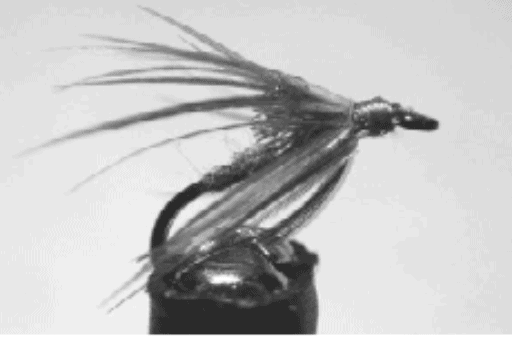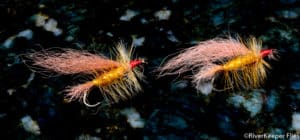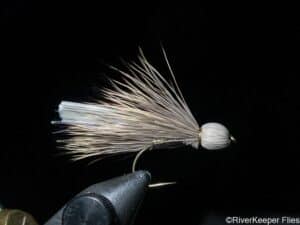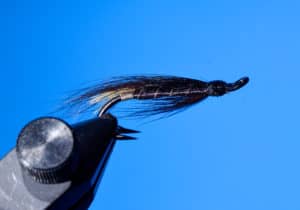I sometimes forget about the importance of mayfly spinners. I was on the river the other night with no visible activity. I decided to blind-cast in a couple locations where I know trout live. What fly should I tie on? I remembered PMD’s had been hatching recently and knew from past experience a Rusty Spinner would be a good choice. I tied one on.
Do you recall what spinners are? They are the final stage of a mayfly’s life. And they can be very important to the fly fisher!
Here are a few real mayfly spinners
Callibaetis

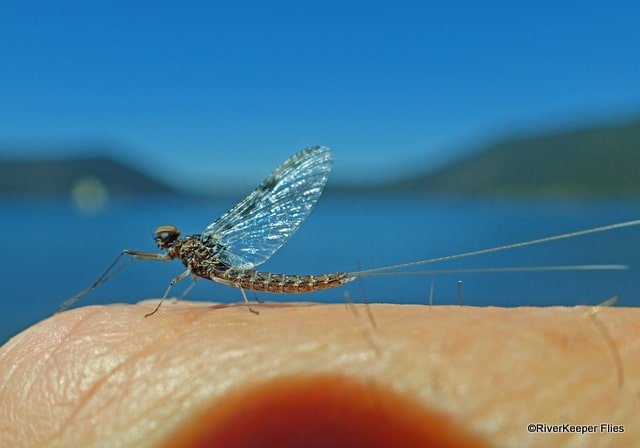
PMD
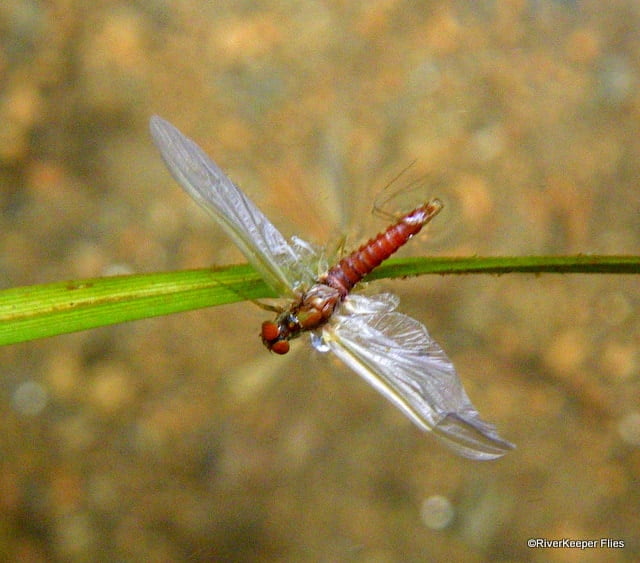
Green Drake
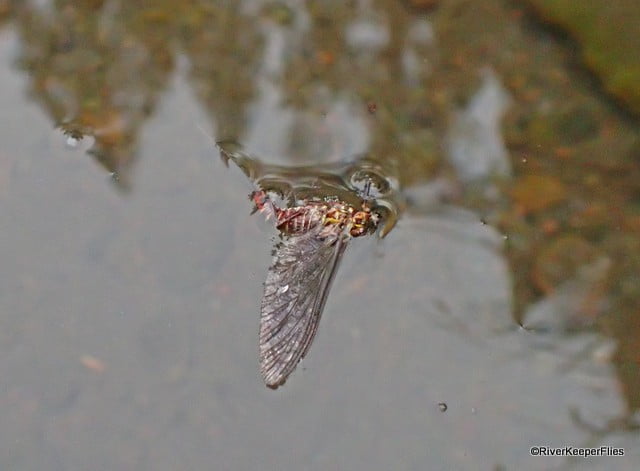
Lastly, here is the smallest…a size 24 or 26.
Trico

The main characteristic to identify the spinner phase of a mayfly are the clear, opaque wings which lay outstretched and flat on the surface film. These are called hyaline wings and provide an extremely reflective surface which I think attracts fish. You can see the similarity of wings in all the photos.
I wrote about spinners in other RiverKeeper Flies posts – Mayfly Spinners and Spinners. To learn more about the mayfly life-cycle, read Pale Morning Duns – PMDs.
If you see dimples on the water from a trout, it has probably sipped a PMD spinner.
How about a few flies to imitate this stage? I believe the silhouette of the transparent wing is a key characteristic to imitate mayfly spinners.
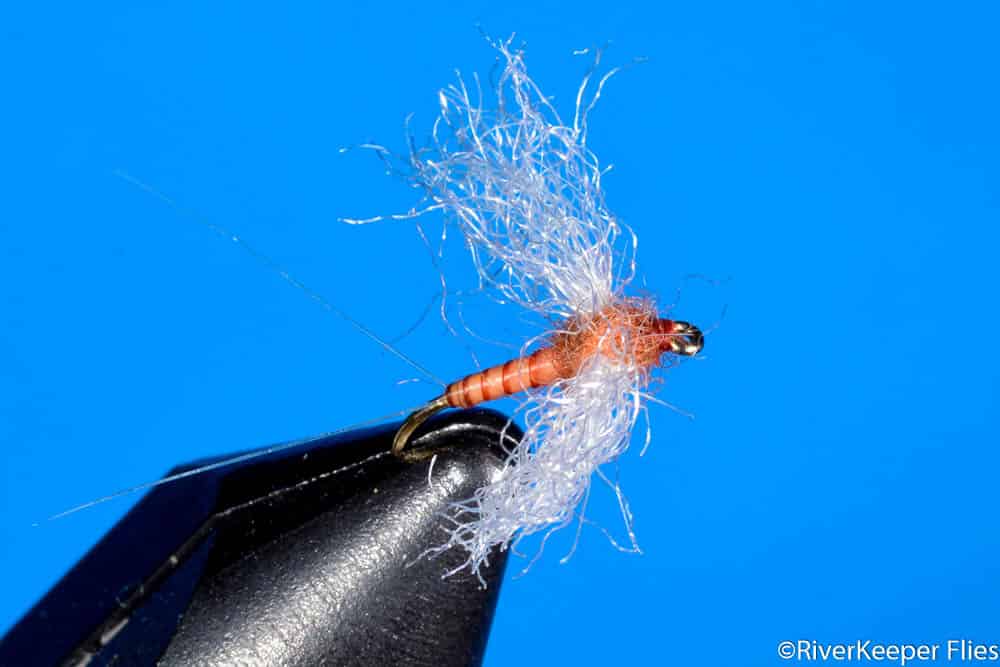

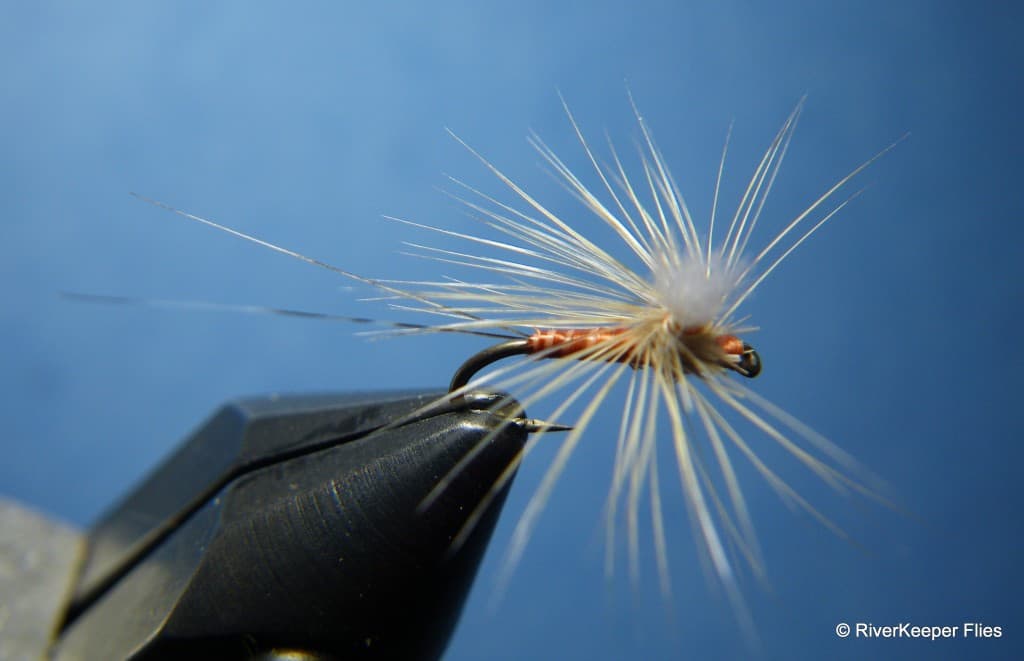
Trico Spinner

I seem to get caught up in using mayfly cripples and dun fly patterns and forget about the importance of spinners. Trout eagerly take these flies.
Here is a Youtube video I took on Ennis Lake of a Trico Dun turning into a Trico Spinner.
Remember my original story? I did catch one unsuspecting rainbow with the Rusty Spinner I tied on the end of my line. It saved the day!
Enjoy…go fish!
